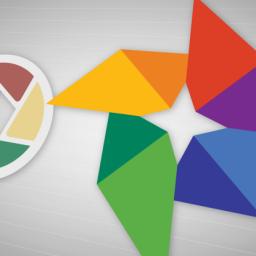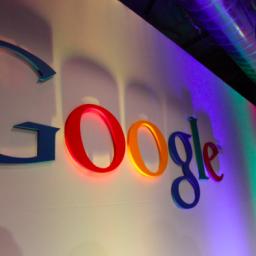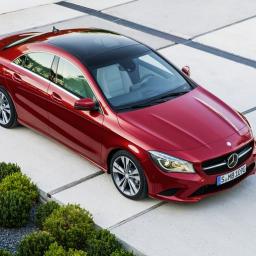
Google is finally
killing off Picasa in favor of their more cloud based Google Photos.
Picasa was a desktop application that allowed you to view and organize your offline photo collection.
As of March 15, 2016, we will no longer be supporting the Picasa desktop application. For those who have already downloaded this-or choose to do so before this date-it will continue to work as it does today, but we will not be developing it further, and there will be no future updates. If you choose to switch to Google Photos, you can continue to upload photos and videos using the desktop uploader at photos.google.com/apps
Will users
move their photo collections to the cloud as Google hopes? Or is this just another attempt to push more computing applications from the desktop to online services?
Paul Eremenko, the head of Project Ara showed the prototype of Project Ara at Google I/O 2014.
Though the phone failed to fully load, Audience cheered on seeing the Android bootup screen.
Project Ara is the codename for an initiative by Google that aims to develop a free, open hardware platform for creating highly modular smartphones.
https://www.youtube.com/watch?v=0He3Jr-fZh0&list=PLK2ccNIJVPpBKf0ko0817k_fjKZzWwcQW
On Monday, Google
announced the release, as an opensource project (Apache License), of
TensorFlow.
According to Google, TensorFlow is their next-gen machine learning system, fixing the shortcomings of DistBelief, the AI system behind several of Google tools such as speech recognition on Android (think "OK Google"), description-based image search in Google Photos or even automatic email reply suggestions.
From the official announcement:
TensorFlow has extensive built-in support for deep learning, but is far more general than that -- any computation that you can express as a computational flow graph, you can compute with TensorFlow (see some examples). Any gradient-based machine learning algorithm will benefit from TensorFlow's auto-differentiation and suite of first-rate optimizers. And it's easy to express your new ideas in TensorFlow via the flexible Python interface.
note:
"Deep Learning" is what used to be called
"Artificial Neural Networks", but on steroids.
More technical explanations are available in their
whitepaper and code is on
GitHub.
Chromebooks have been wildly popular on Amazon. But what will happen to them if Google merges Chrome OS and Android? Rumors have been circulating for quite some time that Google would someday combine Chrome OS and Android, and now it looks like that might happen sooner than anybody expected. A new report indicates that the merge of the two mobile operating systems may happen by 2017.
This move make a great deal of sense. Android and Chrome OS are Linux-based operating systems, which support apps in different ways but share the same foundation. Android forms its own distribution family, while Chrome OS is based on Gentoo Linux.
Both have their own strengths they could bring to a merged smartphone, tablet, and desktop operating system. Android, which runs on more than a billion devices, is the single most popular end-user operating system, with more than 1.6 million apps. Chrome OS has shown that Web-based apps are sufficient enough for many desktop users. In addition, Android is plagued with multiple versions that are very difficult to upgrade.
It makes sense now to explore with mobile devices becoming the primary device. There are opportunities to provide an open platform for both mobile and desktop. This is already happening. Examples of this direction include Chromecast running on a version of Android and the new Pixel C Android tablet.
The actual release date is still over a year in the future. The combined "Android Chrome OS" won't ship until 2017.
http://www.itworld.com/article/2999551/android/google-plans-to-merge-chrome-os-and-android.htmlRussian antitrust authorities ruled on Monday that Google had abused its dominant market position with Android, its mobile operating system, by favoring the company's own services over those of rivals, including Yandex, a Russian competitor. Unlike in other parts of the world, where Google has outmuscled domestic search rivals, Yandex still holds more than a 50 percent market share in Russian online search
Earlier this year, Yandex had complained to the country's competition authority that cellphone manufacturers were not able to include the company's rival digital offerings in the Android operating system. After the complaint, the regulator began investigating whether Google unfairly bundled its own services, like digital maps, in its Android software. Google may appeal the ruling. If the decision holds, the company may be forced to change what services it includes in its Android operating system as part of its efforts to comply with Russia's competition rules, or face potential fines. "Russia is the first jurisdiction to have officially recognized these practices as anticompetitive," Yandex said in a statement, in reference to Google's favoring of its own services in Android over those of rivals.
Update: The US Federal Trade Comission (FTC)
has started its own preliminary investigation into Google's requiring prominent placement of its own apps on Android handsets.
Since 2009, Google self-driving cars have been in 16 crashes, mostly fender-benders. Google claims a human was at fault in every single case. While quick to blame human drivers and even to label them as "idiotic" Google admits the need for "smoothing out" the relationship between the car's software and humans. Google cars regularly take quick, evasive maneuvers or exercise caution in ways that are both cautious, but also out of step with the other vehicles on the road, clashing with actual human behavior.
One Google car, in a test in 2009,
couldn't get through a four-way stop because its sensors kept waiting for other (human) drivers to stop completely and let it go. The human drivers kept inching forward - paralyzing Google's robot. Humans and machines, it seems, are an imperfect mix. A 2012 insurance industry study that surprised researchers found that cars with lane departure warning systems experienced a slightly higher crash rate than cars without them. That highlights a clash between the way humans actually behave and how the cars wrongly interpret that behavior.
On a recent outing with New York Times journalists, the Google driverless car took two evasive maneuvers that simultaneously displayed how the car errs on the cautious side, but also how jarring that experience can be. In one maneuver, it swerved sharply in a residential neighborhood to avoid a car that was poorly parked. Then as it approached a red light the laser system sensed that a vehicle coming the other direction was approaching the red light at higher-than-safe speeds. The Google car immediately jerked to the right in case it had to avoid a collision. In the end, the oncoming car did stop well in time.

A few years ago, Google tested a new kind of "native" ad in Gmail that sat at the top of the inbox and
mostly looked like a regular email. They appear both in the mobile versions of Gmail and on the web. Now, Google is opening up these ads to all advertisers, to purchase directly from AdWords. Advertisers will be able to use the standard AdWords targeting options and work from several templates to build their own native Gmail ads that can feature single images, videos, forms, phone numbers and call-to-action buttons.
What's interesting is that these ads are made for forwarding, too, with a "forward" and "Save to Inbox" link underneath all of them. When you click on "Save to Inbox," the ad will move into your inbox and you can then treat it just like any other regular email. Google says it will continue to give users the ability to control which types of ads they see (and you can always opt out of interest-based ads, too). Google doesn't show ads in the inboxes of Google Apps for Work subscribers.
Smartwatches are here, but are they here to stay? Given short battery life and - for the moment, limited use cases - Google, Apple, and the others are in a race to build or have built apps that make your smartwatch a must-have item.
Google's latest innovation for Androidwear is
interactive watch faces and translation apps. The interactive watch face is a direct assault on Apple, who has not permitted similar functionality for its Apple Watch. Tap, and the watch reveals more information like weather, fitness, to unread mail, to upcoming meetings and so on. There's obviously room for improvement here, but allowing it to happen at all is a step in the right direction. The folks at Google have indicated there are more than 1,500
watch faces currently available.
Their second innovation is putting a built in Google translate on their smartwatch. RTOZ reports:
just speak into your watch to see your conversation translated into any of 44 languages. Flip your wrist to show the translation to a friend. When they respond in their own language, flip your wrist back, and you'll see in your language what they've just said.
Google Translate will automatically recognize which of the two languages is being spoken, so once you tap to start the conversation, all you and your buddy need to do is keep talking naturally.
Google Translate covers 90 languages total (for text translation), and also Google is working on to expand more number of languages that work across various features.

Despite the fact that drivers frequently use in-car apps from Google and Apple, several carmakers including Volkswagen and Ford are
refusing to let the industry juggernauts access private customer information in exchange. If you thought that the companies were doing so out of concerns for their consumers, you'd be wrong. Automakers want to keep such information for their own purposes. This came to light when Reuters published a recent report highlighting the potential windfall that car manufacturers refusing to partake could be missing out on procuring, estimated to be around $40 billion.
The symbiotic relationship sees carmakers utilizing technology to improve the experience for drivers and passengers whilst tech companies are constantly seeking out new outlets for their gear. Technology has now become synonymous with many drivers' experiences. Many cars now make use of Apple's CarPlay service and Google's Android Auto. The risks of not playing ball with big tech companies include losing out on a sustained and promising source of revenue. Car companies may attempt to do an end-run around Apple and Google by manufacturing their own in-car tech apps, but their past record with vehicle infotainment and navigation systems has been poor. Consumer Reports found
"significant rates of complaints" and called them "distracting", "unintuitive and frustrating".
The rise of ad blocking is becoming a serious problem for digital media companies. And for Google, it's turning into a multi-billion dollar issue. PageFair, a company that works with publishers to measure the cost of ad blocking and to help them display less intrusive advertising that can be whitelisted by the ad blockers, estimates that Google lost out on $6.6 billion in global revenue to ad blockers last year. To put that into context, that's 10% of the total revenue Google reported in 2014.
Adblock Plus, one of the most popular ad blockers, does give internet companies the chance for their ads to be whitelisted if they meet an "acceptable ads" policy - which includes what they deem as non-intrusive ads like sponsored search links. But bigger digital advertising companies like Google (as well as Microsoft, Amazon, and Taboola) are made to pay Adblock Plus huge fees - up to 30% of the additional ad revenues they would have made were the ads unblocked, according to The Financial Times. Google has managed to claw back around $3.5 billion by getting on ad blockers' whitelists, but
Google is rumored to be paying $25 million to Adblock Plus alone just to do so.
But Google is not necessarily critical of ad blockers, in spite of the threat they pose to its revenue. Earlier this month Google CEO Larry Page was questioned by shareholder at the company's AGM as to whether he was worried about the rise of ad blockers. He responded that the best response to ad blockers from the industry will be to create better ads.
 Google is finally killing off Picasa in favor of their more cloud based Google Photos. Picasa was a desktop application that allowed you to view and organize your offline photo collection.
Google is finally killing off Picasa in favor of their more cloud based Google Photos. Picasa was a desktop application that allowed you to view and organize your offline photo collection.

